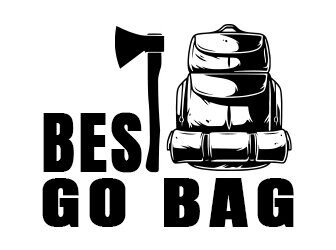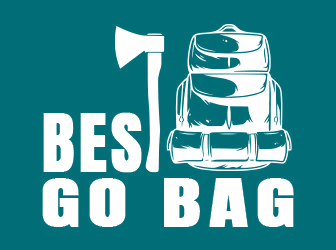Preparedness Notes for Friday — February 12, 2021
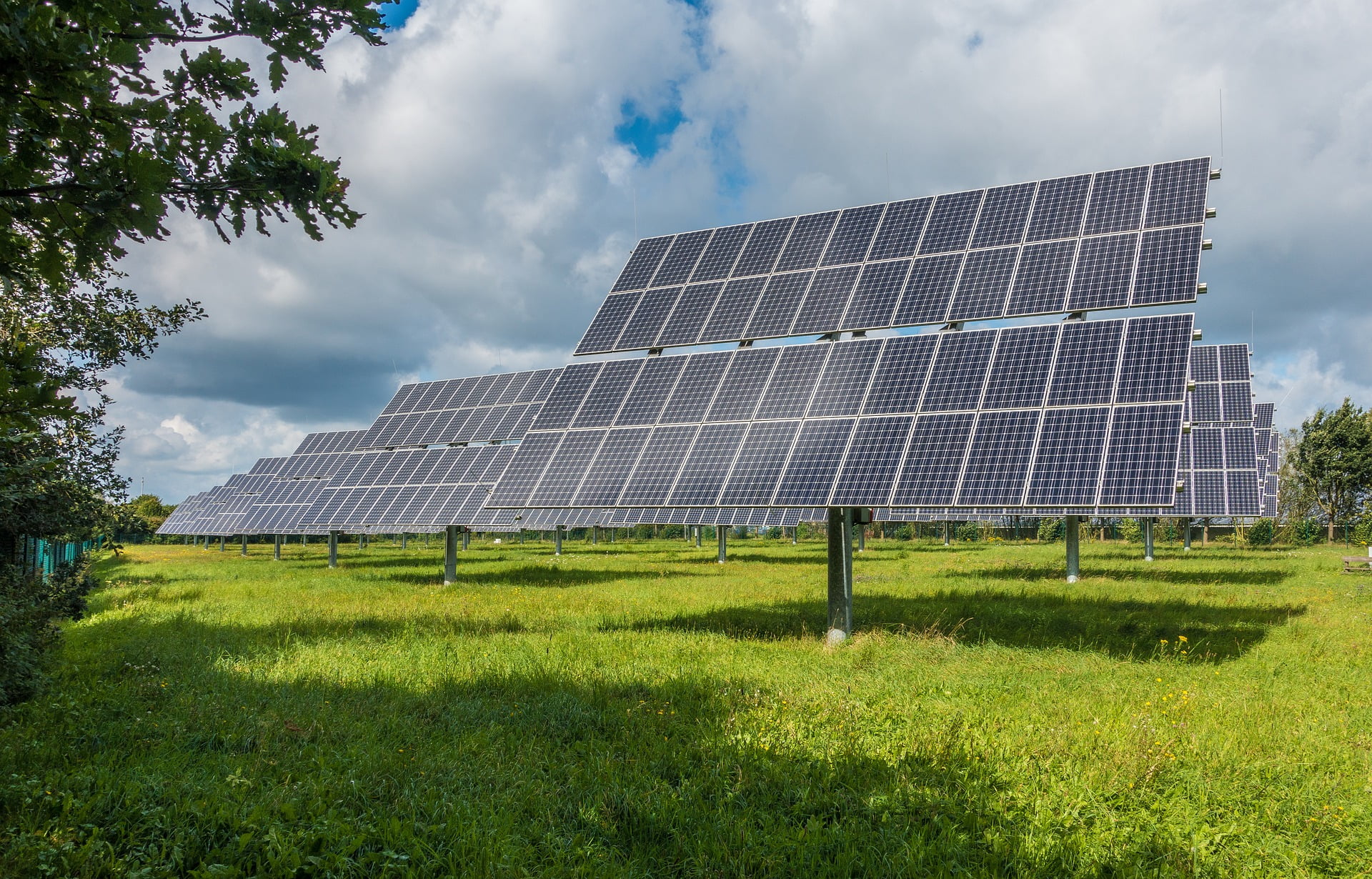
February 12th is the birthday of theologian and journalist Cotton Mather (1663–1728). — SurvivalBlog Writing Contest Today we present another entry for Round 93 of the SurvivalBlog non-fiction writing contest. The prizes for this round include: First Prize: The photovoltaic power specialists at Quantum Harvest LLC are providing a store-wide 10% off coupon. Depending on […]
Tactical Flashlight: Staying Prepared For a Power Outage

Tactical Flashlight: Staying Prepared For a Power Outage
When you lose power, you lose the ability to see once it gets dark outside. Not only is this a major annoyance, but it can also be dangerous in many situations. If you have to go in your basement, attic, or outdoors to check on power lines, you will need a powerful light to help you see.
While most cell phones do have a flashlight built-in, they are not always the best light source. Plus, what if you can’t charge your phone due to losing power?
A tactical flashlight is your best bet for making it through a power outage safely. Ours is made from aluminum alloy, making it one of the sturdiest and most durable flashlights on the market. It is also waterproof and has nine light functions. The best part of all is that it’s solar-powered!
This means that the flashlight is powered by small solar panels built into the side of it. These panels convert energy from the sun and use it to charge the flashlight! Instead of batteries or chargers, your flashlight will charge during the day and give you hours of light once it is fully charged. If you prefer to charge your devices, it also has a USB charging option. Either way, you will never have to go without light again!
Having a flashlight on hand is not only convenient, but it can also be life-saving. Being in the dark can be detrimental to your safety. If it is pitch-black outside, you won’t be able to read medication labels or look at your fuse box, for example. And, for those who have a hard time getting around, it will be even harder to make it up and down the stairs. Keep reading to find out more information regarding preparation for a power outage!
What Other Supplies Will I Need?
You know that you will need a flashlight to be prepared for a power outage, but what else will you need? Being prepared is the best way to ensure you and your family remain safe during a power outage or any other emergency. The only way to prepare is to gather supplies and tools ahead of time to make sure you are ready to go! You don’t need anything crazy, and you don’t need a ton of supplies. There are a few essential items you should consider acquiring.
If it is helpful, you can make a checklist of all the things you’ll need for an emergency. Think about what you would need to survive any emergency, and write it down on a list.
Then, account for every member of your household before you purchase the supplies. You should have enough of everything for everyone who lives with you. Also, consider your or your family’s specific needs, like medicine, infant formula, and other similar items.
Survival Kit
You should have a survival kit prepared at all times. It doesn’t matter if there’s a power outage, a lockdown, or a natural disaster. A survival kit is a must-have. This kit should contain all of the necessary items needed to help you survive. Tools, supplies, food, and water are all items you should consider including. It does not need to be elaborate, but it should at least have the absolute essentials to help you make it through an emergency.
Ideally, these are the items you should consider having in the kit:
- Heat source: A fire-starter is your best bet here. A lighter or matches will work fine. You never know when you will need a fire, whether it’s for warmth, to cook, to purify water, or to send smoke signals for help.
- Light source: This can be the solar-powered flashlight we already talked about, or something else, like a lantern. As long as it is reliable and durable, it doesn’t matter.
- Water or water purifier: Make sure you stock up on clean and purified water. An alternative would be to buy a water purifier, which can purify thousands of gallons of water.
- First aid kit: Unfortunately, injuries tend to go hand in hand with emergencies, even power outages. Make sure you have enough supplies to tend to minor cuts, wounds, sprains, and infections.
- Tactical knife: You may have to cut through wiring, tape, or gauze during an emergency. You can also use it for self-defense and hunting if need be.
Survival Food
Another critical thing to have prepared for a power outage or emergency is survival food. Survival food is food that is non-perishable and has a long and stable shelf-life. It should be high in calories to keep you full. And, it should have enough nutrients to help sustain your energy throughout the emergency.
Our survival food and food kits are built to last for 25 years, giving you peace of mind that you’ll never go hungry, even during an emergency.
Power Generator
One of the best devices you can have for a power outage is a generator. Our Power Generator will help give you power when you need it most. Don’t worry about fuel or powering the generator. Ours is solar-powered, so it self-charges when the sun is out. This means it is fume-free and quiet, unlike other generators. You can use it to power large appliances, like refrigerators, freezers, medical devices, and handheld devices like cell phones.
How Should I Prepare For a Power Outage?
Besides gathering the food and supplies we outlined for you above, there are other steps you should follow in order to prepare for a power outage.
During a power outage, the first step you should always take is to report the outage. Just because you lost power does not mean other people did. And even if other people did, you can’t assume they’re reporting an outage for your neighborhood. Here are a few things you should consider doing in order to prepare for when a power outage happens:
- Watch the food in your fridge and freezer: You will likely have to throw things away depending on how long the power is out. After four hours, the food in the fridge will go bad. After 24 hours, the food in the freezer will go bad (if the door is left unopened).
- Unplug everything in your home: You don’t know exactly when your power will come back on, and sometimes there can be an electrical surge when it does. Just to be safe, keep everything unplugged to prevent an electrical fire.
- Stockpile books and boardgames: Once you are safe, you will need a way to pass the time. Make sure you have plenty of books, magazines, and games on hand to pass the time.
Conclusion
Hopefully, you see the benefits of having a tactical flashlight readily available. The best way to be prepared for a power outage is to stock up on supplies and tools and follow the necessary steps to keep you and your family safe.
Power outages can be scary, but they do not have to be dangerous. 4Patriots has everything you need to be prepared!
Sources:
How to prepare for a power outage, according to a professional prepper | NBC News
Survival Food: The Ultimate Guide
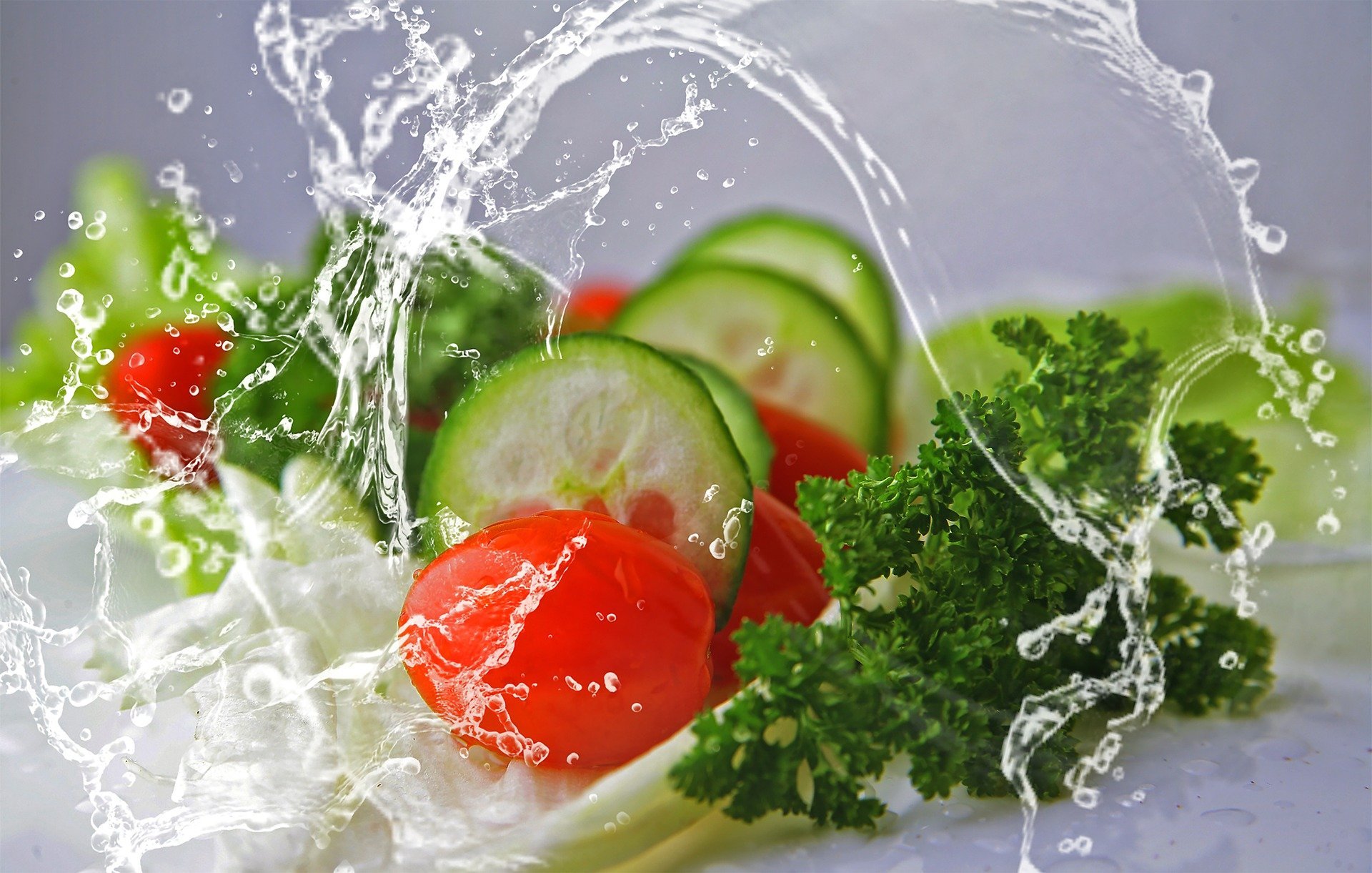
Survival Food: The Ultimate Guide
If you are interested in learning more about preparing for emergencies, you have come to the right place. When people start to think about preparing, they often think about gathering tools, supplies, extra clothing, and other similar items. This is great because these items are important. However, two things are more important than survival gear: food and water. You would be surprised at the crazy situations people make it through without tools and supplies. You rarely hear survival stories if the people did not have food and water.
This information is not meant to make you stressed. It’s meant to help you prioritize what you need if you are preparing for emergencies. The absolute best way to prevent stress and make things easier in scary situations is to be prepared. Planning ahead will take out all the guesswork for you if disaster strikes. We have put together the ultimate guide to survival food, along with a few tips for the other supplies you might need for emergencies. Keep reading to find out everything you need to know!
Are Survival Kits and Food Kits the Same Things?
No, survival kits and food kits are not the same things. Survival kits, otherwise known as preparedness kits, are designed to give you the tools and items you need to survive. Of course, you do need food and water to survive. Both kits are necessary for your survival during an emergency situation. One gives you the tools to make it through an emergency, and the other gives you energy and nutrients so you can stay focused on the situation at hand.
Often, people will just combine the two kits into one main survival kit. That way, it will be easier for you to access, and you won’t have to worry about where one kit is. A good idea would be to get a large, durable, and waterproof container. Even a big plastic bin will work fine.
Then, make your survival kit and your food kit. Once you have all the items you need for both, you can organize them in the bin. You can still have them separated by food and by tools/supplies, but they will be together and conveniently located in the same place. Doing this is a sure way to save you time and energy.
What Items Should I Have in Each Kit?
The items you have in each kit are very important. And while both do not have to be elaborate or filled to the brim with supplies, there are some essential items that should always be included. It is important to note that not every kit will look the same or have the same supplies in it, and that’s fine. You can always adjust and choose the items based on your specific needs.
One of the main factors to consider for food and supplies is how many people live in your household. For example, preparing for a single-person household and preparing for a family of five are very different tasks. You will have to get the correct rations of food for each person in your home. And, if there are babies or toddlers, that preparation might look even more different. While there are many guides and lists that can offer advice and suggestions, only you know what your family’s specific needs are.
Survival Food for Your Food Kit
One of the best parts about survival food is that there is no prep work to be done. It comes preserved and packaged, ready to be added to your survival kit. All you will need to do is organize it and ration it if each member of your household has a section in your survival kit. Other than that, you are good to go! Check out the list below for the survival food you should consider having on hand.
- 4-Week Survival Food Kit: This contains enough rations for one person to have three meals a day for four weeks.
- Emergency Food Bars: These bars make the perfect supplement to any survival food. They can also act as a meal replacement.
- Fruit, Veggie, and Snack Survival Kit: This is a great way to ensure you are getting enough vitamins, minerals, and nutrients through your survival food.
- Supplements to Food Kits: Besides the food kits, you can have jars of other supplemental foods like veggie soup, rice, and even pancake mix.
Survival Kit
Your survival food will go into your survival kit. If you are just working on a survival kit alone, that’s ok too. Remember, your survival kit should include items that will allow you to survive. Think to yourself: what would I really need to survive in an emergency? Narrow it down to the bare necessities, and that will make a great start for your kit. We have created a list of suggestions for essential items you should consider including in the kit.
- Solar-Powered Flashlight: Make sure you can always find your way in the dark with this solar-powered flashlight. No batteries required.
- Tactical Knife: You must have something to cut through things. You never know when you’ll need to slice through rope, tape, or even electrical wires.
- First Aid Kit: Always be prepared for injuries that can happen, especially during natural disasters.
Conclusion
Now that you have read our ultimate guide to survival food, you should feel more confident in your emergency preparedness abilities. Preparing really is not a hard thing to do, but you just have to be willing to put in the time and effort to do it.
In the long run, putting the time in now will only save you time during an emergency. Don’t waste your time trying to gather supplies and food at the last minute when you should be focusing on making it through the emergency.
The great thing about our survival food is that it will give you the sustained energy you need to focus and stay fuller for longer periods of time. And, gathering the food and supplies you need now is the one action you can take to be ready for anything. Realistically, it should not take you much time at all to prepare your emergency preparedness kit.
Once you order your survival food and supplies from 4Patriots, all that’s left to do is organize it all together in a waterproof container! It couldn’t be easier, and the one thing that is guaranteed is your peace of mind.
Sources:
Solar Energy: Your Everyday Pocket Power
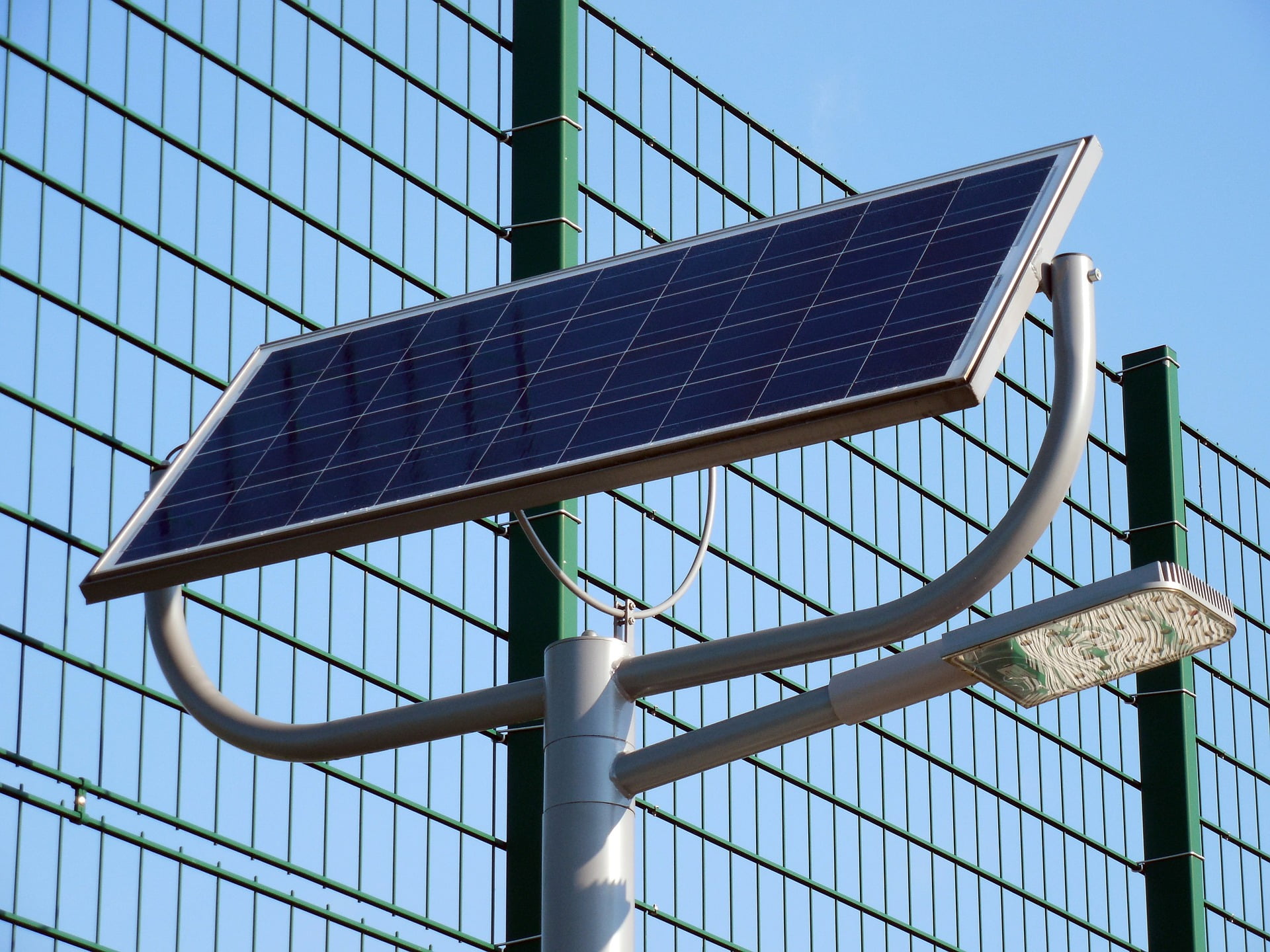
Solar Energy: Your Everyday Pocket Power
If you’re not using solar-powered tools and devices, it’s time to make the switch. Chargeable and battery-operated devices are a thing of the past. They are outdated and are not nearly as reliable or effective, especially in emergency situations. When it comes to emergencies, you don’t want to worry about whether or not your device will have enough charge to get you through. Plus, searching for extra batteries is annoying.
Forget about emergencies for one minute and think about the items you use daily that require batteries or a charger. Cellphones, flashlights, and generators are all great examples of devices you don’t want to worry about having enough power. You want to be able to use these things even when you’re in a pinch. With regular chargers and batteries, there isn’t always a guarantee that you’ll have enough power.
Consider a mobile charger that comes with a power pack as its charging base. If you are on a road trip, traveling, or running errands and you didn’t fully charge the base, then you’re out of luck. You won’t be able to charge your device. The same goes for if you’re camping or doing something outdoors and need a flashlight. If you don’t have new batteries or a backup set, you won’t be able to use it.
If you’ve ever found yourself in one of these situations, you know how frustrating (and dangerous) it can be. That’s where solar-powered energy comes in. Any time the sun is out, your device will charge. You never have to worry about having a fully-charged device again! Many people assume solar power is just for the panels that go on your roof, but that is not the case. Solar power can be used every day on devices big and small.
Why Is It a Good Idea to Use Solar-Powered Devices?
In case you did not know, solar power converts the energy given off by the sun and turns it into power and electricity. It does this through a special panel that collects the energy and transfers it to whatever it is attached to. In the case of solar panels, they are attached to your home’s energy grid and supplies power to your home.
With smaller tools and devices, there are grids that are equal to the size of the device. In many cases, it is directly built into a part of the device, like on the side of a flashlight or on top of a power pack for a portable charger.
There are quite a few reasons why you should consider using solar power when it comes to more large-scale uses like powering your home. We will focus on why you should use solar power to power your smaller devices every day or in the case of an emergency. Check out our list below to see the top three reasons why it’s a good idea to use solar-powered devices.
Saves You Money
In any case, solar power saves you money. You’ll never need to buy a charger or batteries for your solar-powered device again, which does add up over time.
Plus, one device will last you a long time because you can charge and drain the battery from hundreds to thousands of times. That means you will get a minimum of five years of use, on average. And, if you are interested in using solar power for your home, it will cut down on your energy bills there, too.
No Charger or Batteries Necessary
Besides the money-saving factor, always having batteries on hand (or taking up room in your junk drawer) is annoying. So is having extra chargers that go with your device.
If you have something that is solar-powered, the charger is already built-in! It will have a small panel on it that acts as the charger. And if you don’t have a solar-powered device, you can still charge your device with a solar-powered charger or generator.
Safer and More Reliable
As long as your device is in the sunlight during the day, you never have to remember to charge it. Just leave it by a window or somewhere sunny until you are ready to use it.
With non-solar devices, not having batteries or not having an outlet to plug into can be dangerous, especially when you need power during an emergency. If you rely on something like a radio, cellphone, or even a flashlight, you shouldn’t have to worry about it failing you when you need it most.
What Are the Best Solar-Powered Tools?
Solar-powered tools are great for everyday use, and they are even better in an emergency. If you need power for a device, solar power is the way to go. You will never have to worry about not having a charge again. Here are the best solar-powered tools you need:
- Rechargeable batteries: If your device doesn’t have a charging cord or a built-in solar panel, then these batteries will be your new go-to. You can charge and drain them 500 times, and they work on any device that takes regular batteries.
- Power Generator: This is a must-have for emergency preparedness. Use the generator inside your home to power larger devices and appliances, like refrigerators and medical devices.
- Tactical Flashlight: This is great for emergency situations and daily use. There are many times when we find ourselves needing extra light, like when we go into basements or attics. Even looking under your sink if there’s a leak.
Are There Portable Solar-Powered Devices?
Yes! While the items we mentioned in the above lists are also technically portable, some devices are specifically made for portability. This means they are small enough to travel with you, and they can go anywhere at any time.
- Patriot Power Cell: These power cells are only slightly bigger than your cell phone. They are strong enough to charge any device that uses a USB charging cable. Each cell has two USB ports so you can charge two devices at once. Plus, there’s a built-in flashlight!
- Mini Solar Generator: This is perfect for stashing with your survival kit or packing for travel. This generator also only weighs eight pounds. It’s small but mighty with a 300-watt capacity. It has eight outlets and can be used to power your most essential devices, like laptops and radios.
Conclusion
As you can see, solar energy is the best possible way to power all your devices, big and small! From pocket-sized power cells to full-sized generators that can power large appliances like freezers and microwaves, there’s nothing you can’t power with solar energy.
At 4Patriots, we have all the solar-powered devices you will ever need. Whether it’s a camping trip, preparing for an emergency, or just charging your cell phone every day, there’s a solar-powered device for that.
Sources:
How Does Solar Work? | Energy.gov
How To Prepare 25-Year Emergency Food Kits
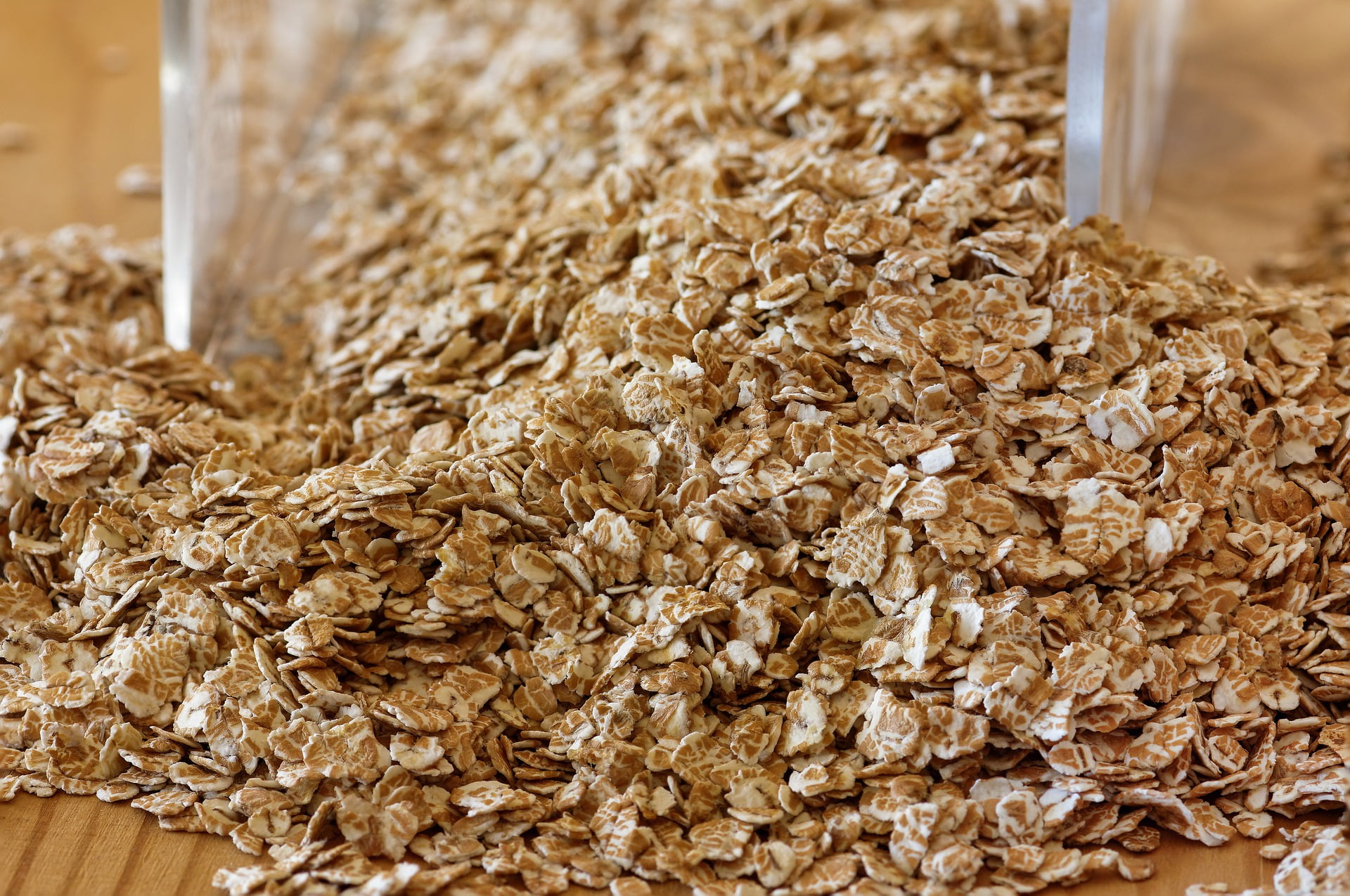
How To Prepare 25-Year Emergency Food Kits
If the past year has taught us anything, it’s that we should always be prepared for the worst. You never know what will happen. Pandemics, natural disasters, and power outages are real threats we can face. Being prepared for these events doesn’t have to be scary. In fact, being prepared helps relieve stress and fear.
Emergency preparedness looks different for everyone. It depends on a lot of factors, like your household size, the needs of each member of your household, location, and climate. It is safe to assume everyone’s preparedness plans will look different. That said, some emergency preparedness elements look the same across the board, no matter the specifics of your situation. One of these elements is being prepared with a food kit.
If you’ve never heard of a food kit or if you don’t know how to prepare for an emergency, don’t worry. We have all the information (and products) you need to keep your family safe in times of crisis. No matter the situation, being prepared is the only way to ensure everyone’s safety. Keep reading to learn how to prepare emergency food kits that last up to 25 years.
What Is a Food Kit?
A food kit is a kit that contains food and water. More specifically, it has non-perishable foods that will last for a long time. In the food kits at 4Patriots, our food has a stable shelf life of up to 25 years. The food in the kit should contain a substantial amount of nutrients and calories to give you energy and keep you full for long periods of time. You don’t know how long you’ll be without food, so you want to eat filling food.
Think about rations of food when preparing a food kit. Consider the number of people who live in your household because you want to make sure you have enough food for each person. A good rule of thumb is to have enough food and water for each person to have three meals a day for three days. The more food you can store in your kit, the better.
To prepare your food kit, get freeze-dried food from 4Patriots in the amount suggested above. Store it in a safe place, like a waterproof container in case of flooding. And keep it near your survival kit so everything is in one place.
How Can a Food Kit Last For 25 Years?
Twenty-five years is a long time. It seems crazy to think that any food could last that long. Our food kits can stay fresh that long because they are freeze-dried. The same reason applies to our supplemental food products. Freeze-dried food maintains its freshness due to a specific preservation process.
Freeze-drying food works like this: the food is dried through the removal of all moisture. You must freeze the food and then seal it in a strong vacuum. As the vacuum works, the food goes through a process called sublimation. This means the ice on the frozen food turns into vapor. It is popular for preserving food because it maintains more flavor than processes like dehydration.
By removing the moisture from the food, freeze-drying prevents the growth of any bacteria. This means no mold or fungus can grow. Bacteria can’t rot the food because it needs moisture to grow. Removing the moisture also means the food will not get stale. This means you will be able to safely consume the food and not get sick.
Is a Food Kit The Same As a Survival Kit?
A food kit is not the same as a survival kit, but it can (and should) be included in your survival kit. The main difference between the two is that a food kit contains only food and water. A survival kit contains a wide variety of items and tools. These items can be used for survival during an emergency. A food kit can’t replace a survival kit. It is supplemental and can be stored in the same place. When it comes to emergency preparedness, it is important that you have both types of kits.
As we mentioned, a survival kit contains the necessary tools for survival. This might mean different things to different people, but some tools should be included in everyone’s kits. Before you create your own survival kit, think to yourself: what are the essential items I need to survive? Remember, food and water will be in your food kit, so focus on other tools that would help you escape from, or survive in, various emergencies. If you are having a hard time thinking of items, see the below list for our suggestions.
- A heat source: This is an important one, especially if you live in the north or anywhere that drops below 50 degrees. The heat source could be a few different things, such as a fire starter, thermal blankets, or extra layers of clothing and blankets.
- A light source: A solar-powered flashlight is your best bet for a light source. It will charge during the daytime when there is light out and give you hours of bright light when it gets dark. Being able to see is an essential part of surviving emergencies.
- A sharp tool: You want something that can cut through things easily, like a tactical knife. A knife will help to cut packaging, wires, rope, and anything else you may need to get through.
- A first aid kit: This is an essential item. It should contain various bandages, scissors, antibacterial cream, disinfectants, gauze, gloves, tweezers, tape, allergy medicine, and ibuprofen (or something similar).
These are just a few of the items you should keep in your survival kit. You can include other items like a multitool, a water purifier, extra clothing, a tool kit, and a survival handbook for wilderness or home. This may seem like a lot of stuff, but it is always better to be safe than sorry! You never know the situation you might find yourself in.
Conclusion
Thanks to freeze-dried food, our food supplements and food kits can stay fresh in your pantry for up to 25 years. That’s over two decades of peace of mind knowing you will be prepared and never go hungry during an emergency. Food and water are essential because we can’t survive without either. If disaster strikes, the last thing you need to worry about is where you are going to find food and water.
At 4Patriots, we make being prepared simple and easy. Our food kits and survival supplies ensure you are ready for anything. Remember, being prepared will save you time, money, and precious energy so you can focus on making it through the emergency or disaster.
Sources:
9 Must-Haves For Your EDC Kit
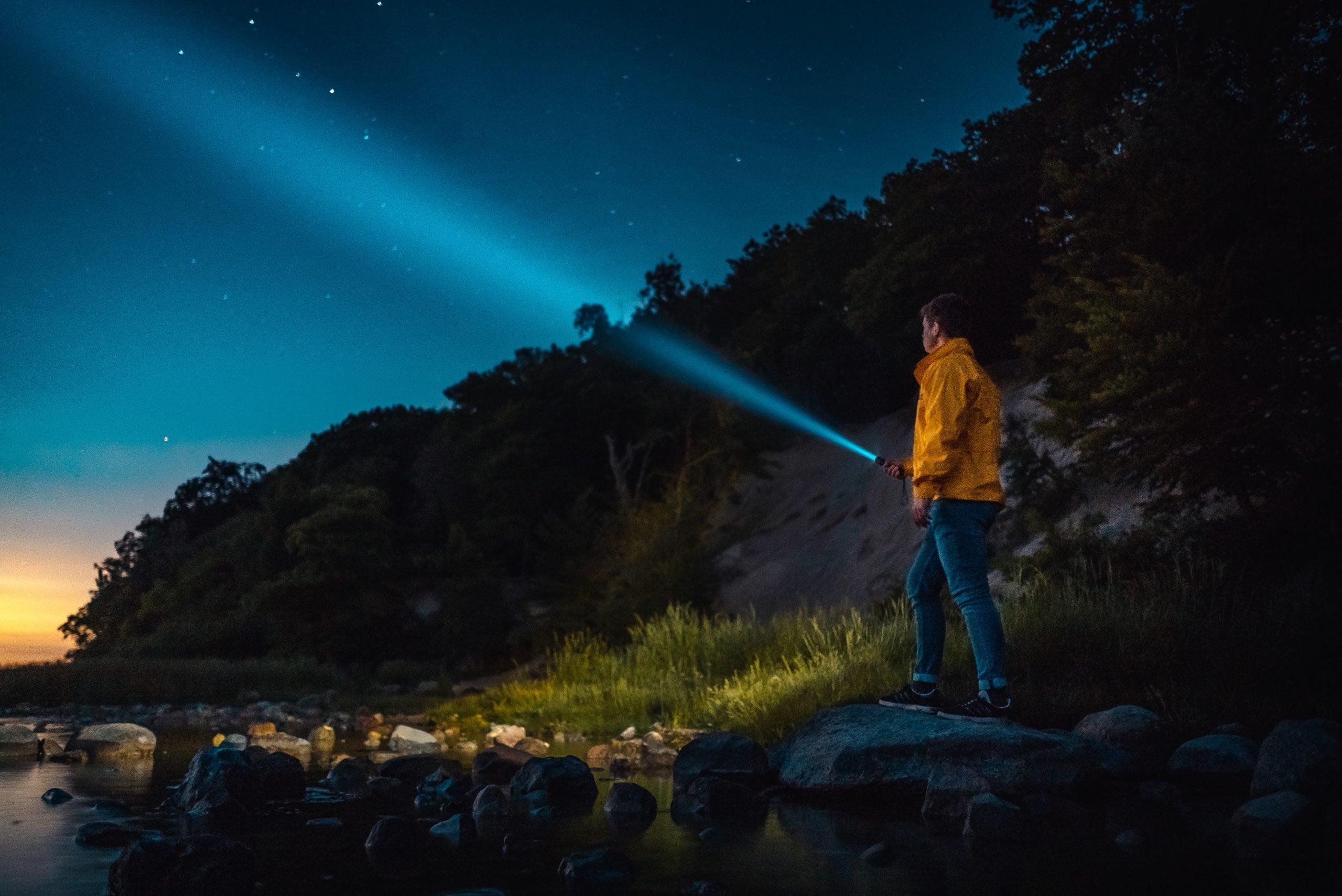
There are so many must-haves when it comes to your EDC kit (Everyday Carry) items. Similar to your everyday carry bag, the contents of a smaller pack can change—and will change due to new items that become available over time. Each item serves a very important purpose—to aid in a survival situation should you face […]
How To Use A Picture Frame For Hidden Gun Storage
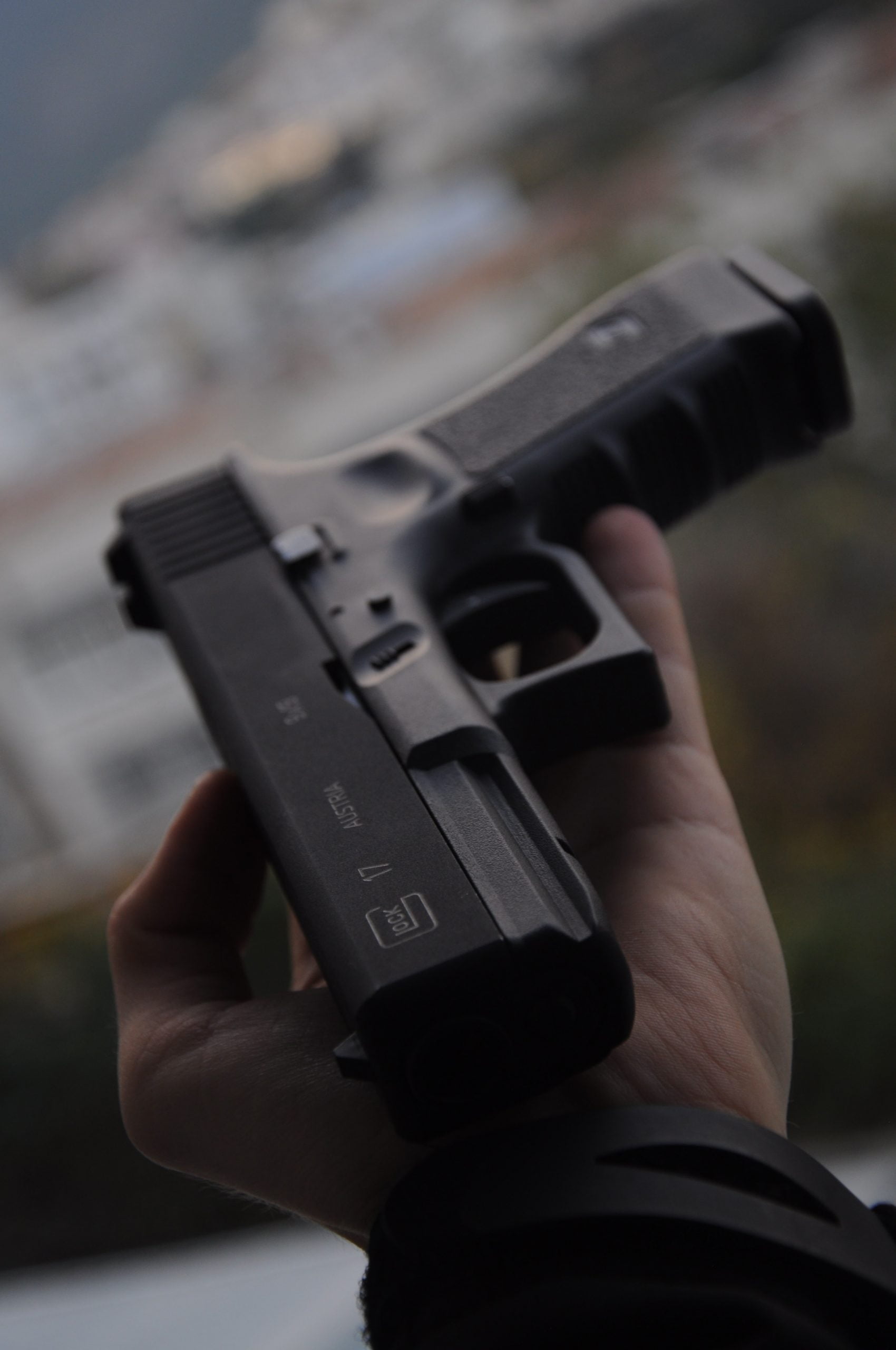
Impress your friends and fellow preppers with this awesome and functional hidden gun storage. Safety and home defense aside, this DIY trick is quick and fun! There are all kinds of practical reasons to want to hide your guns in your home. With the help of this tutorial from DIY Projects, you’ll have this badass […]
Ultimate Guide To Wilderness Survival
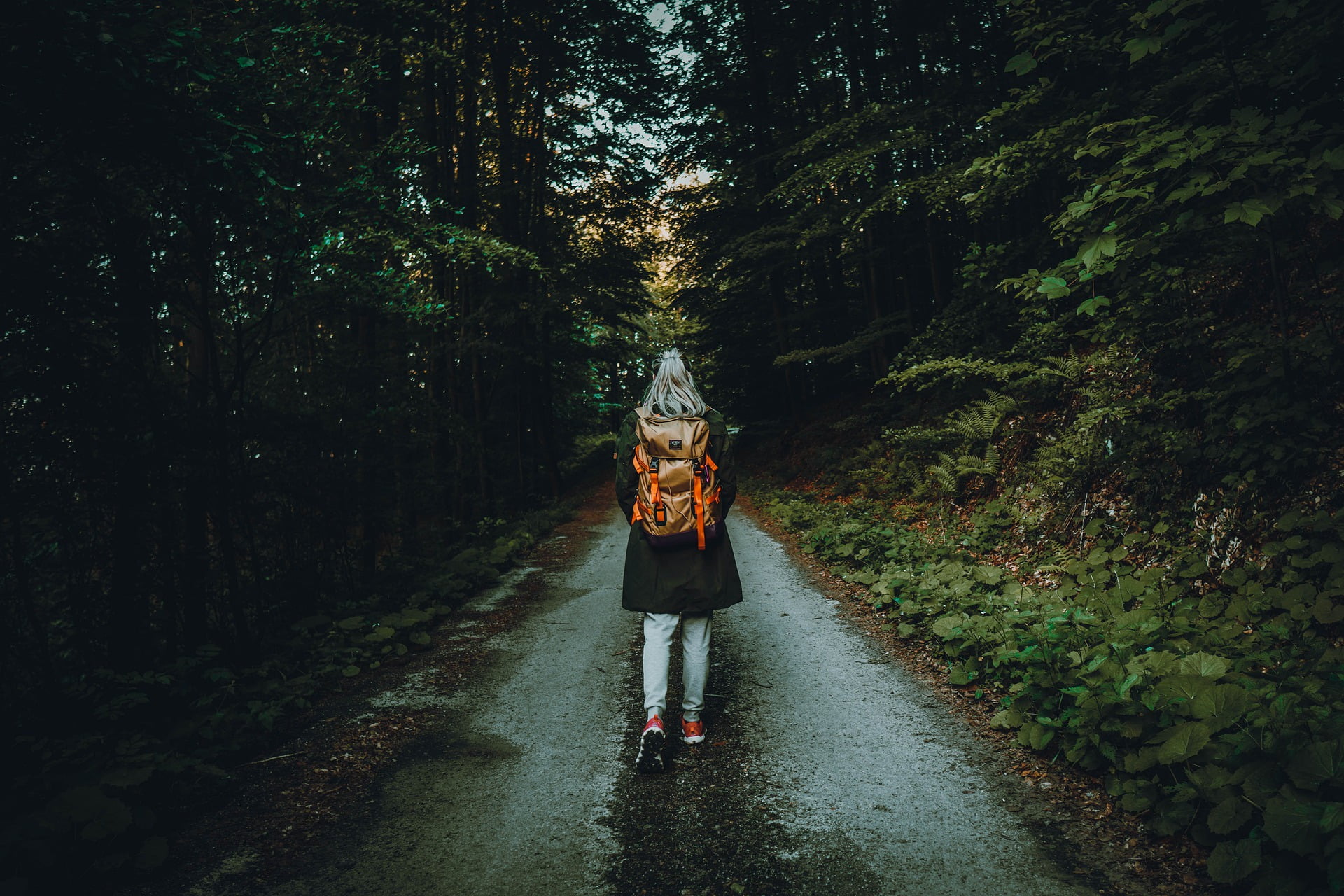

We all live in a world that is driven by innovative technology that automates our households, makes work easier and provides endless streams of entertainment. While these things do, in fact, make life easier in general, when an emergency occurs or a disaster strikes, most of us just aren’t prepared. As a whole, we have grown complacent and aren’t prepared to survive during natural disasters.
Many individuals like to unplug from all of their electronics and escape to the wilderness for a hike or camping adventure. But the truth is that many of us rely on technology even while out in the woods and forget that there are critical tools and survival skills that are necessary in case of an emergency. Surviving in the wilderness is about more than just a couple of handy-dandy camping tools and first aid supplies—although those are important, too.
Let’s dive into our ultimate guide to wilderness survival.
Wilderness Survival Guide
The most prepared individuals are the ones who can survive catastrophes—no matter where they are. It is even more important to have the right tools and knowledge when disconnected from society. You will miss having resources like a fire department and local rescue, clean drinking water, or heat to keep warm.
Always pack an emergency bag with all the survival tools you need for the wilderness, and be sure to keep it somewhere in your house where everyone knows where it is. Or, you can keep those items in a go-bag in your car. The most prepared survivalists stockpile tools and supplies in multiple places because you never know when you will need them.
Essential Skills
In order to survive in the wilderness, you’ll need to have a few skills in your tool kit. These essential skills are the basic requirements of a safe and comfortable night in the wild.
How To Build A Shelter
Learning how to build a temporary shelter is extremely critical to your survival.
A lean-to is arguably the easiest shelter to build. It consists of leaning materials like branches and sticks against a pre-existing natural formation or structure, such as a tree, large boulder, or another edifice. Though it doesn’t protect you on all sides, it is a sufficient shelter to throw up in a hurry.
You can also build a round lodge—otherwise known as a teepee, wikiup, or a wigwam. This structure is built similarly to a lean-to shelter with a large number of branches and sticks leaning together, but this design creates a bigger shelter with a little more protection. Round shelters do tend to take longer to create, but they can protect your gear, food, and you from the elements or other wild predators.
How To Find Food And Water
Food and water are critical concerns when surviving in the wilderness. The average adult can go up to three weeks without food, but the rule of thumb is that we can only live three days without water. As such, finding water should be your first priority after building a shelter. Ideally, you’re looking for two or three cups of water per day to keep your body functioning properly.
Running water like waterfalls, rivers, or streams make for great sources. However, be wary of stagnant bodies of water like lakes or ponds because they are likely to carry diseases that will make you incredibly sick. When in doubt, purify the water. We love Stealth Angel Survival’s Potable Aqua Drinking Water Germicidal Tablets. All it takes is two tablets and 35 minutes, and voila—your questionable water is now clean and safe to drink.
Finding food may be trickier than finding water. It’s a good practice to try to forage or find local food sources before digging into your emergency rations. As a general rule, you’ll be looking for food in the form of plants or wildlife. However, keep in mind that many plants are poisonous, so it’s imperative that you’re confident in your choice of plants before cooking up a leafy green stew. Here are a few guidelines that may save your life:
- Avoid white or red berries.
- Boiling removes some poisons—but not all.
- Keep an eye on what the animals eat. Chances are that you can eat the same things.
- Always avoid mushrooms. Many mushrooms are edible, but your identification needs to be precise to avoid eating poisonous varieties that could possibly kill you.
How To Start A Fire
Learning how to get a fire started is one of the top survival skills you can learn— and you probably think that you can just use matches. But what happens if your only pack of matches gets wet, falls out of your pack, or you just forget to bring them?
A fire starter is an incredibly important tool for surviving in the wilderness. Temperatures don’t have to be below freezing for you to succumb to hypothermia. If you are in a cold wind, rain, or air, hypothermia is a threat, and if you can’t start a fire in these weather conditions, you risk dying.
Having a fire also allows you to purify water, signal for help, cook food, cauterize wounds, and even ward off wild predators.
It’s alright to carry matches in your survival kit – just make sure you have a backup method for starting a fire, like the Stealth Angel Arc Lighter. All it takes is a push of a button for this lighter to unleash a fiercely powerful dual-arc beam that ferociously ignites anything it touches—perfect for surviving in the wilderness.
Gear Checklist
Prior to heading out into the wild, use this checklist to ensure you have everything that you’ll need. Not only will you be much more comfortable, but you can be especially confident in knowing you have all the essentials to ensure your safety should the worst actually happen.
A Tent Or Tarp
Tents come in all sizes and shapes today. Look for a reliable and lightweight tent that will be easy to carry with you. You can even make do with a tarp in a pinch.
A Tactical Knife
Tactical knives come in a wide variety of shapes and styles. There are tactical fixed blade knives and folded blade knives that each tackle different tasks. We love the Chaos Ready Knife Safety 6-In-1 Multi-Tool from Stealth Angel Survival. Not only does this multi-tool come with a durable serrated blade, but it also comes with other essential tools such as a bottle opener, fire starter, and LED light.
Sleeping Bag
Staying warm even in moderate weather is important, so be sure to pack a lightweight, warm sleeping bag. It needs to be warm and comfortable yet easy to carry.
Flashlight
A dependable flashlight is a must, even if you are only planning a day hike. If you happen to take shelter during a storm in a dark cave, you’ll wish you had one— and you certainly need one at night. Get yourself a powerful flashlight or a trusty headlamp. Trust us—you’ll be glad you did!
A Final Word
If you plan to be in the wilderness often, you should definitely learn these survival skills and carry these tools in your emergency survival kit. Even if you don’t plan to hike or camp, often you can still—and should—stockpile emergency supplies and make sure you have the right tools at home. You never know when a natural disaster or storm will cut you off from community resources.
Not sure where to get emergency supplies? Check out Stealth Angel Survival. Whether you need a first aid kit, tactical gear, or survival tools for your emergency preparedness kit, Stealth Angel Survival has you covered.
Sources:
https://www.ifrc.org/en/what-we-do/disaster-management/about-disasters/what-is-a-disaster/
Multipurpose Tool: Essential Upgrades in 2021
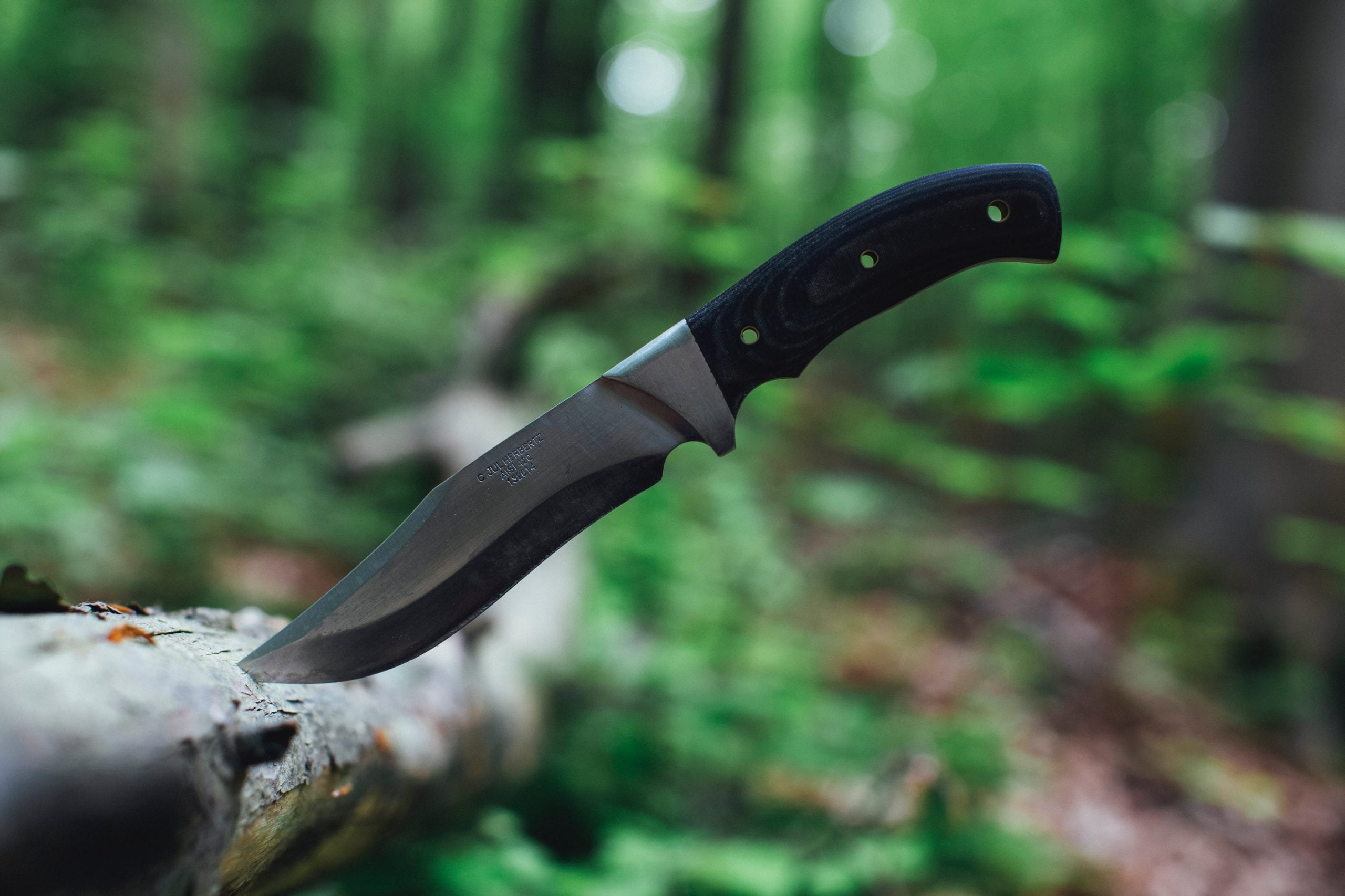
Multipurpose Tool: Essential Upgrades In 2021
Why buy a whole bunch of tools when you could buy two or three that serve many purposes? In 2021, make some essential upgrades to your tools and supplies. Simplify your life by buying some multipurpose tools. These are tools that look like one specific tool but really serve various functions.
These tools are not the same as a construction multitool. Those are powered devices, such as saws, used for construction and building. The multipurpose tools we are talking about will come in handy for your day-to-day life, but they can also act as essential survival supplies.
The best part about multipurpose tools is that the saying “less is more” is really true. They may look like one tool, but they can help with lots of projects and tasks and help in survival situations. Instead of paying for both a set of tools and survival supplies, look at 4Patriots multipurpose tools for a simpler and more cost-effective solution.
We will discuss the benefits of multipurpose tools and which ones you should have your eye on for the new year. It is always best to be prepared for emergency situations and day-to-day work that needs to be done around your home. These tools will help you make it through anything.
What Are Some Examples Of Multipurpose Tools?
One great thing about multipurpose tools is that there’s always a tool that will meet your specific need. If you are looking for something to use at home, keep in your emergency supply kits, or take on camping trips and wilderness adventures, we’ve got you covered.
Below, you’ll find a list of the best multipurpose tools to help you make upgrades to your tool collection for the new year.
- Liberty Blade Tactical Knife: A high-quality knife has many uses, especially for outdoor wilderness situations. You can use this tough knife to cut kindling, dig small holes, skin meat, and gut fish. You can also shave a beard and trim hair, cut through rope and zip ties, and you can protect yourself with it.
- Car Escape Tool: This is an essential multipurpose tool that anyone who owns a car should have. You can keep it on your keychain to make sure you have it anytime you drive a vehicle. This is a 3-in-1 tool, which includes a whistle, window breaker, and seatbelt cutter. While it is not a tool you can use for projects or around the home, it is a tool that can get you out of almost any emergency situation in your car.
- Firebolt Waterproof Tactical Arc Lighter and Flashlight: This is a 2-in-1 tool that can help give you two of the most important things for safety and survival: fire and light. These are two of the essential elements of survival. It is a flashlight with three light settings, as well as a lighter. This is a great idea for camping and outdoor trips or to keep in your survival kit at home. It is even great for everyday use to light candles or a fire, and to use as a basic flashlight.
- Ready Shovel: This is a must-have for any outdoor activities. It is a 3-in-1 survival shovel that has serrated edges. These edges can cut through thick foliage, plants and roots, hard dirt, and even ice. It is compact and can fit in your backpack for hiking and camping. It includes a nail remover, hex wrench, and a compass. On top of all that, it has a mini survival kit that fits inside the handle. This is the ultimate multipurpose for any outdoor activity.
- Blackout Beacon Emergency Light: This multipurpose tool is geared more towards emergencies but can be used in some day-to-day situations. It has a motion-sensing night light, a handheld flashlight, and an emergency light that turns on when a power outage happens. Keep some on hand for power outages and blackouts, so you never have to be in the dark again.
- Staples of Survival Kit: This pocket-sized kit is not necessarily a multipurpose tool, but it can help save the day in lots of situations. It has an 11-in-1 multipurpose pocket knife, pliers, wire saw, whistle, fire starter, compass, and a small first aid kit. This is the ultimate kit for survival and emergencies.
Almost all of these tools can be used in everyday life. You can always use a flashlight, lighter, and a knife to cut things. This is part of what makes these multipurpose tools so versatile. They work in every situation, emergency or not. Having some of them in your home or packing them when you go outdoors will make your life a whole lot easier, and more importantly, safer.
Why Do You Need Multipurpose Tools?
We have already briefly mentioned some reasons why you need multipurpose tools. Here is a list of the top reasons:
- Simplify Things: Simplicity is key. Using a multipurpose tool means you will need overall fewer tools in your collection. This means your tools will take up less space, and you will have fewer tools to haul around.
- Convenience: It is so much easier to have one tool that does it all. Instead of fumbling through multiple tools, certain situations and projects can utilize one tool instead of multiple.
- Emergency Preparedness: Having one multipurpose tool on hand or in your emergency survival kit might just save your life. From the car to your home, multitools can keep you safe and get you out of tricky situations.
- Cost-effective/Money Saver: Buying one or two multipurpose tools is a huge money saver. You will not need to purchase as many single-use tools. Instead, you will pay for a multitool that has many uses.
Conclusion
There are many reasons why you should consider upgrading to multipurpose tools in 2021. They are convenient and help to simplify your tool collection. They are also cost-effective and can help you save money.
Multipurpose tools help to ensure you are always prepared, even if an emergency arises. You will not have to locate multiple tools if you are in a pinch. Everyone can benefit from having a multipurpose tool, whether you are preparing for an emergency or simply need to complete projects at home.
From pocket knives to survival kits and multipurpose flashlights, 4Patriots has you covered. There are so many unique gadgets that you should add to your collection for safety, emergency preparedness, and everyday use.
Sources:
5 Reasons To Stock Survival Boxes This Winter

5 Reasons To Stock Survival Boxes This Winter
It’s important to always be prepared. We hear this all the time, but what does being prepared actually mean? Many action items are needed to be prepared for emergencies. Having a plan, stocking up on food, supplies, and water, and knowing what to do when disaster strikes are all things you should be ready for.
Picturing you or your family being in trouble is a scary thought. We know it can be tough to think about emergency situations, but the more you prepare, the easier it will be to handle them. In a time of crisis, focus on surviving the ordeal and making it through. Make things easier on yourself and prepare!
While you should be prepared year-round, it is especially important to stock up with survival boxes in the winter. The weather is worse (and sometimes dangerous), and it can reach freezing temperatures depending on where you live. This adds an extra element to consider when preparing for emergencies.
If you don’t know what exactly a survival box is, basically, it’s a box that contains essential supplies that are needed for survival. They can be customized to you and your family’s specific needs. They should contain items such as food, water, supplies, and tools that will help you make it through an emergency.
Below are 5 reasons why you should stock survival boxes this winter. Keep in mind there are plenty of other reasons, but these are the 5 main ones.
- It could save your life: This is the most obvious, yet most important, reason to stock survival boxes. The point of a survival box is to help you do just that: survive. In a worst-case scenario, it could be the difference between life and death.
- To be prepared for the worst: You hope you will never have to go through an emergency. If you do, the best way to make it through is to be prepared. This means having the right supplies, along with plenty of food and water.
- To save yourself time and money: Time is essential. And that could not be more true than during an emergency or disaster. The only time you might have is to figure out your next move. A survival box will cut out on time spent on finding food and supplies. During a disaster, essential items may also become more expensive. Buying things ahead of time saves you money.
- As part of your preparedness plan: Having an emergency preparedness plan means knowing where to go and what to do during an emergency. Knowing where your survival box is stored and what its contents are should be an important part of this plan.
- To prevent stress and panic: There is nothing more stressful than being in an emergency situation. So don’t make things worse by scrambling to find supplies. A survival box makes sure you have everything ready to go while preventing extra panic.
What Should You Have In Your Survival Box?
While it’s important to have a survival box in general, it is even more important to include the right items. Think to yourself: what are the absolutely essential items you need to survive? Food and water are the most important things. But you will also need supplies and tools to help you make it through tricky situations.
Here are some things you should consider stocking in your survival box:
- 4-Week Survival Food Kit: This kit has enough food for one person to survive for a month. It includes breakfast, lunch, and dinner. These meals will give you enough nutrients and energy to make it through each day of an emergency. The best part? The food is freeze-dried, so it will last for 25 years.
- HaloXT Tactical Solar Flashlight: Flashlights are so important for emergencies, especially power outages and blackouts. They can help you see when your house is without power or if you are outside at night. They will also help if you need to fix your car if it breaks down in the dark. Plus, the flashlight is solar-powered, which means no batteries or electricity is needed to power it.
- Patriot Pure Ultimate Water Filtration System: You will never have to worry about clean water again with this water filtration system. It removes 99.9% of bacteria, viruses, chemicals, and more. It doesn’t require electricity, holds 2 gallons of water, and the filter will last for 5,000 gallons of water.
- Warm clothing: Especially in the winter, you should have extra warm layers packed in your survival box. Long johns and other types of underwear are great because they don’t take up too much space. You might also consider keeping warm blankets along with the survival box.
- A fire-starter: Include matches or a lighter. This way, you can light candles or fires, boil water, and have a source of heat and another source of light.
- Tool kit: Make sure you have at least a few tools, such as a knife, hammer, screwdriver, and any other handheld tools that can be used for cutting or building.
- First-Aid Kit: This one is important. Make sure you have the necessary supplies to treat minor cuts and wounds.
Are Food Kits The Same Thing As Survival Boxes?
No, food kits are not the same thing as survival boxes. However, a food kit can (and should) be included within your survival box. A food kit contains edible items that will help to nourish you and give you enough energy to survive. Your kit can also include purified water and supplements to make sure you do not go hungry. Below are some examples of the food kits and food items you can find at 4Patriots.
- 72-Hour Survival Food Kit: This kit is perfect for people who are new to prepping. It is also great to keep in cottages/cabins and boats. Anywhere you visit frequently should have this on hand. It has enough food for one person to survive for three days.
- Grab-N-Go Survival Food Kit: This kit contains 28 servings of survival food. It contains mac & cheese, broccoli, oatmeal, and white rice. It’s great on its own or as a supplement to larger food kits. It will keep you going when times get tough.
Conclusion
There are many reasons why you should stock survival boxes, especially in the winter. The cold weather makes every emergency situation more dangerous than if it occurred in the warm weather. Suddenly, frostbite, freezing, and getting sick from the cold are risks on top of the emergency at hand.
Survival boxes should contain essential items that will help you survive for at least 72 hours, but the longer, the better. You should remember to have enough food, supplies, and water for each person in your household.
You should have a survival box to be prepared, save time and money, prevent stress and panic, and help you survive. You should also include it in your preparedness plan. Unfortunately, disaster can strike at any moment. Give yourself peace of mind and be prepared.
Sources:
https://www.almanac.com/content/winter-car-emergency-kit
https://blog.gunassociation.org/winter-bug-out-bag-essentials/
https://smartasset.com/personal-finance/10-things-you-need-in-your-winter-survival-kit
